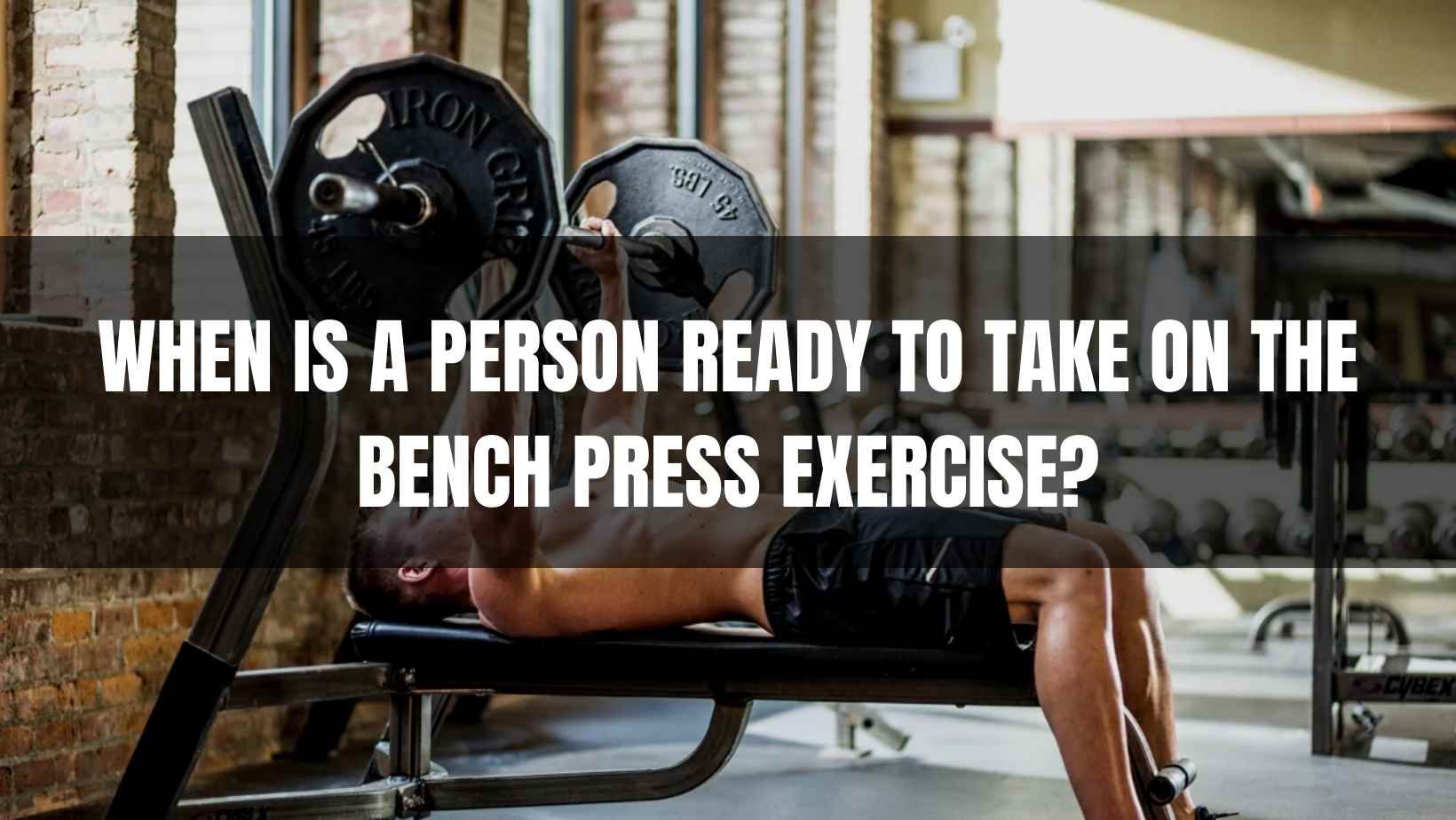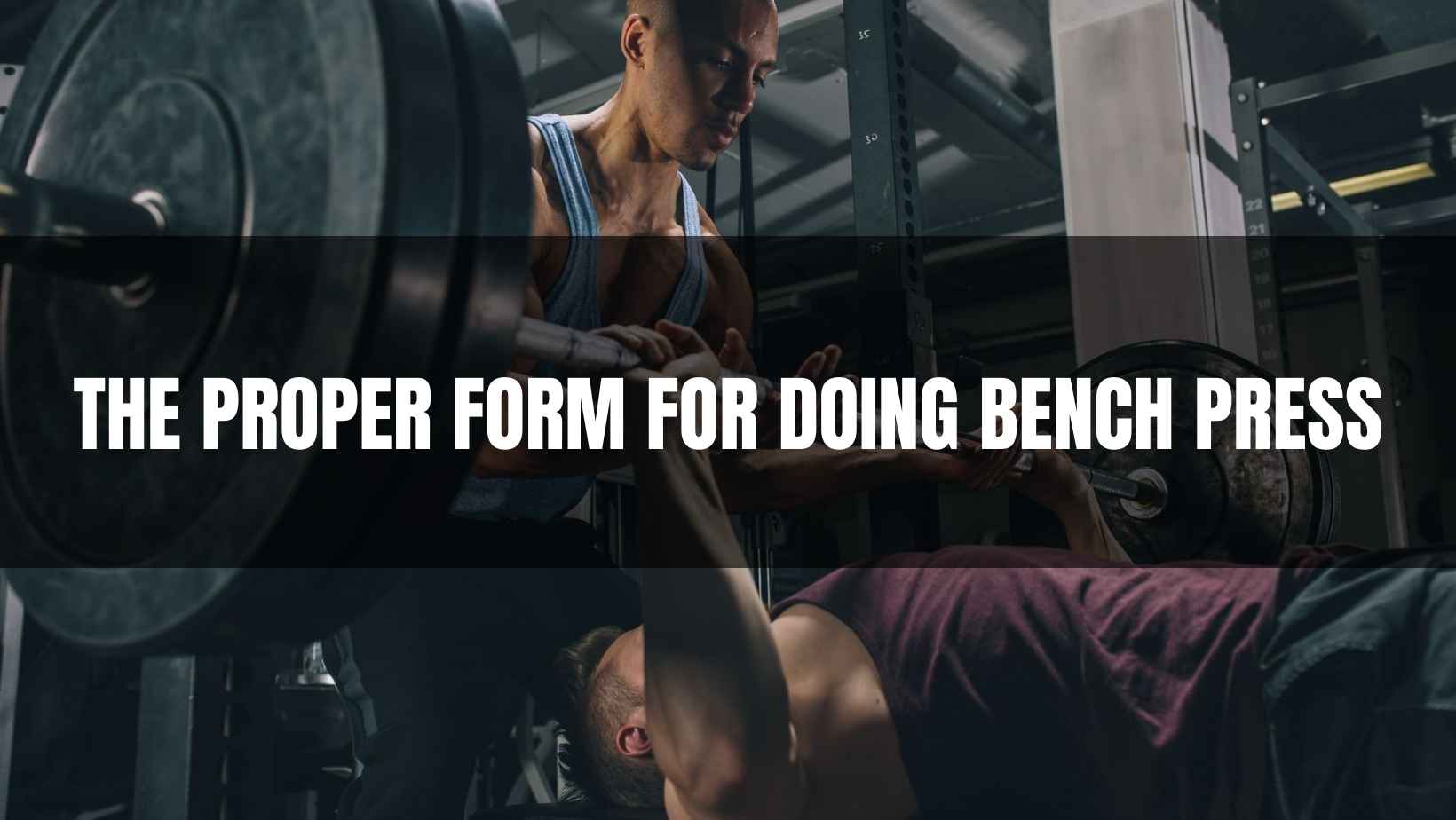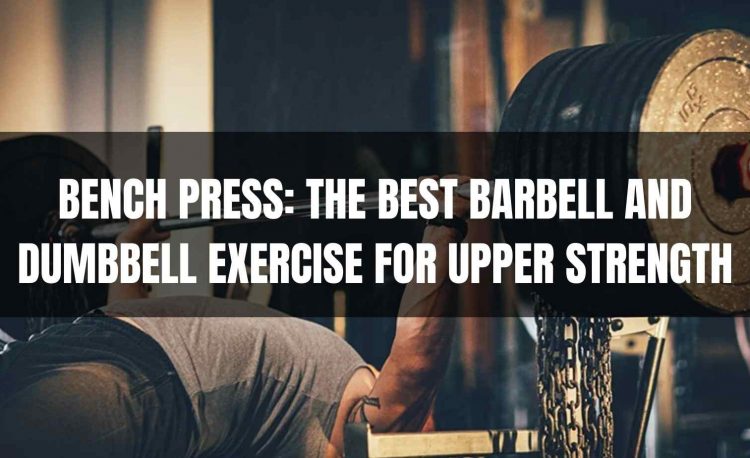Walk into any gym in the globe, regardless of size, location, or customer, and you’ll notice one thing in common: a bench positioned beneath a secured barbell, ready for the next person to begin bench pressing.
It’s no surprise that the bench press is so popular. Once you’ve mastered the basic movement pattern and your bench press form, you’ll notice rapid improvements in strength and growth in three primary muscular groups: the chest, front shoulders, and triceps.
But how can you know if you’re ready to take on the bench press if you’re new to the gym or lifting weights? Here’s how to improve your bench press form.
What is Bench Press?
The bench press is an exercise that involves a person lying on a bench, and lifting a barbell up and down, in a repetitious fashion. The person lies on their back, and then lifts the barbell off a rack with arms extended at shoulder width. The person breathes normally throughout the movement, and then lowers the weight to return to the starting position.
There are several variants of bench press such as incline or decline bench press, floor press, dumbbell bench press, or barbell press. The bench press can help build muscle mass, and may be done in conjunction with other chest exercises such as push-ups or dip. Many people use it as an alternative to the barbell bench press because of its lighter weight requirements. It is a compound exercise that primarily works the pectorals, triceps brachii, anterior deltoids and triceps. These muscles are involved in providing stability, mobility and force during arm movements and the bench press primarily uses these muscles to provide stability during the movement.

When is a person ready to take on the bench press exercise?
Before you get below the bar, make sure you have enough strength in your chest, shoulders, and triceps to support the weight of the empty bar. The Olympic barbell, which is the standard one used in most respectable gyms for bench pressing, weighs exactly 20kg. Depending on your weight training expertise, that may or may not sound like a lot. If it does, you’ll need to work on your press-up technique first.
Begin in the press-up position, with your hands beneath your shoulders, your core firm, and your toes together, forming a straight line from head to heels. Bend your elbows to drop your chest to the floor, then rest for a second in the lowest position before pressing back up to the start (but don’t lock out your arms at the top).
If you’ve never done a press-up before, start by doing one good rep at a time and progressively increasing your strength until you can do 10 good reps without stopping.
You are now ready for an empty bar bench press (using the form instructions below), but only if you have a “spotter” who can stand behind you and aid your lift if you begin to struggle. Continue reading for a full guide on the bench press for increasing muscle size and strength in your upper body.
How to do a proper bench press
Before we go into refining your bench press form and perfecting the action, let’s go over the fundamentals.
- Lie down on a bench with your back to the wall.
- Grip the bar with your hands slightly wider than shoulder width apart, such that your hands are directly above your elbows at the bottom of the move. This enables maximal force generation.
- As you breathe in, carefully lower the bar to your chest.
- Push up as you exhale, clutching the bar tightly and focusing on a location on the ceiling rather than the bar to ensure it travels the same path every time.
What could possibly go wrong? In actuality, it is very easy to tear the muscles that stabilize your shoulders, which might be tough to repair. Prevention is far superior to cure, so put your ego aside and first learn how to do it safely.
While watching others in the weight room, it may be tempting to begin pressing with bench at various angles. While it is true that pressing on a bench set at a 30° or 45° elevation increases muscular activation in the upper chest, pushing on a level bench increases activation in the lower pec muscles. When researchers asked volunteers to do sets of six reps at 65% of their one-repetition maximum, they discovered that muscle stimulation was stronger when the bench was flat than when it was put at a 15°, 30°, or 45° inclination, according to a paper in the European Journal Of Sports Science. Make the flat bench the foundation of your chest-building plan, and incorporate incline variations to target your upper chest and front shoulders.
Bench press tips for those who are new
Whether you’re new to the move or a seasoned pro wanting to improve your bench press form, Jenna McKean, British powerlifter and Maximuscle ambassador, has some pointers.
- Points of contact
- Your feet should be firmly planted on the ground beneath or behind your knees. In order to build tension in your hamstrings and glutes, press your feet into the floor.
- Throughout the lift, keep your head, shoulders, and hips on the bench, and your shoulders should retract and press firmly into the bench to establish a sturdy foundation.
- The set-up
- When your arms are locked out above, your eyes should be exactly under the barbell, and the bar should be no higher than your wrists.
- For most people, your hands should be somewhat wider apart than your shoulders on the bar.
- Unracking and re-racking
- Make use of a spotter! If you don’t have one, stop well before failure so you may re-rack the bar securely.
- Begin by performing a hard lock-out with the bar directly above your shoulders.
- Lower the bar under control for one or two seconds to roughly the location of a chest strap heart rate monitor, then push until your elbows are straight and the bar is under control.
- Before releasing the tension in your arms, gently re-rack the bar and ensure it is secure.

The proper form for doing bench press
“For optimal strength and growth increases, forget about the weight on the bar and focus on being as steady on the bench as possible to produce tension from head to toe and get the most out of every rep,” says strength coach Andy McKenzie. Here’s some more ideas to help you improve your bench press form.
Get a grip
“To maintain the optimum stance to press the weight up, your hands should grip the bar roughly shoulder-width apart,” McKenzie explains. “If you have a wide hold, you risk putting too much pressure on your shoulder joints, while a small grip puts strain on your elbows.” Grip the bar as tightly as possible – when pressing the bar up, envision trying to bring your hands together.” But don’t move them.
“Squeeze the bar as hard as you can for a second or two before bringing it out of the rack on a big set,” explains trainer Robert Kane. “According to the irradiation concept, this will activate the surrounding muscles and allow you to lift heavier.” Don’t forget the golden rule: wrap them around the bar. Some weightlifters utilize a thumbless grip, although it’s called the “suicide” grip for a reason.”
Keep your feet on the floor
As you force your head, upper back, and glutes into the bench, you must also drive your feet into the floor. This causes total-body tension, allowing your muscles to fire at their full capacity. “To flex your quads, press your feet hard into the floor,” advises strength instructor Paul Carter. “Because the body works in synergy, having your complete body as tight as possible will quickly help you bench more weight.”
Arch your lower back
“You must maintain a powerful arch in your lower back as you raise and lower the weight, so focus on getting into this position before you ever touch the bar,” McKenzie adds. “Your glutes must be in continual touch with the bench as well, and tensing them firmly allows you to maintain an arch in your lower back and keep your core braced, which is critical to maintaining both your upper and lower body stable.”
“Most men don’t get tight enough before setting up to bench,” Carter says. “You need to have a strong scapular retraction, so draw your shoulders down forcefully into the bench.” This will build tension across your torso, allowing you to push harder while lifting heavier.
Keep your elbows close
“Begin each rep by bending your elbows and slowly lowering the bar until it touches your chest near the nipples,” McKenzie explains. “Perfect form entails lowering the weight with your elbows as close to your sides as possible, then pressing back up powerfully.”
Be head strong
“From the minute you lie down to the moment you rack the weight, the back of your head should be in touch with the bench,” McKenzie adds. “Raising your head will have an influence on the rest of your body, causing you to lose stability.” For added stability, keep your shoulders and upper back in contact with the bench throughout the set. As you drop the bar to your chest, squeeze your shoulder blades together.”
Common mistakes by beginners
To get the most out of your bench press, avoid making the following blunders, as described by Will McAuley, former professional powerlifter and strength and conditioning coach at personal training studio PerformancePro.
Going too heavy
“Don’t try to lift more than you can,” McAuley advises. “Your body will realize it can’t manage it and lift your hips to place your chest in a better position to contract and carry the weight, causing your form to deteriorate.” The simplest solution is to just lighten the load.”
Not setting your shoulder blades
“Unlike a press-up, you want your shoulder blades to stay still during a bench press to assist stabilize the barbell and prevent shoulder damage while lifting big loads,” McAuley explains. “Set your shoulder blades by drawing them back and down as if trying to press them into your back pockets before raising the bar out of the rack.” When you unrack the bar, imagine pushing yourself into the bench rather than raising the bar upwards.”
Moving your feet during the set
“Your feet, like your shoulder blades, should stay steady throughout the set,” McAuley explains. “Moving your feet about indicates that you aren’t as tight as you should be.” Make sure your feet are flat on the floor and push through them for the duration of the set, as though you’re trying to force yourself off the bench.”
Changing your grip width
“Where do you grasp the bar when you bench press?” ” McAuley inquires. “Is it always the same distance from the rings or the smooth section of the bar?” If not, you need to start being more consistent. Changing your grip breadth can have a significant impact on which muscles are engaged and how much weight you can lift. A slightly broader or narrower grip can make you significantly weaker or stronger, making accurate progress impossible.”
Getting the chest touch wrong
“This may be bouncing the bar off your chest, touching it to your chest too high, or not contacting your chest at all,” McAuley explains. “All of these are related to the bottom of the rep as the bar approaches the chest. A lifter will frequently fail to bring the bar all the way to their chest. Make careful to touch your chest on each rep; if you can’t, reduce the weight on the bar.
“Don’t bounce it off your sternum when you touch your chest!” Tap your chest, then press it up – you should be in complete control throughout.
“Finally, make sure you’re touching the bar with your chest rather than your collarbones.” In contrast to most barbell workouts, the bar should not move in a straight path. Begin directly above your shoulders and work your way down in a diagonal line to the centre of your chest.”
Using a thumbless grip
“Your thumbs should be around the bar every time you grab the barbell, especially for the bench press,” McAuley advises. “Using a thumbless grip provides no benefit and puts you at risk of dropping the bar on your face, neck, or chest.” Squeeze the bar as hard as you can with your thumbs around it. This will aid in the generation of more force and the recruitment of more muscles.”
Conclusion
In conclusion, the bench press is truly a great exercise to add to your weightlifting workout routines. It can be used to improve performance in the bench press and other pressing motions. It can also be used as a core strength exercise, or for upper-body hypertrophy.

